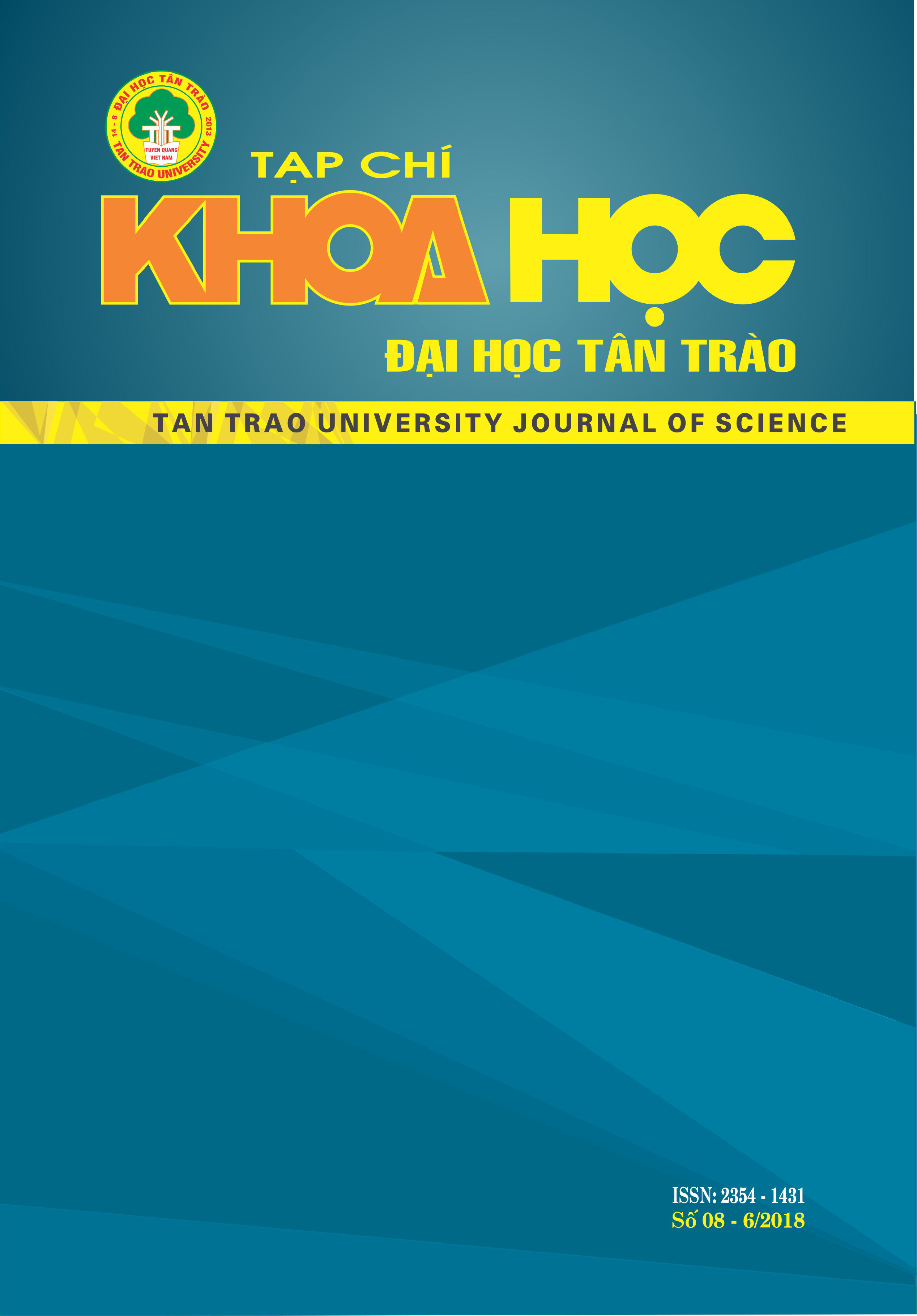Mô hình Einstein tương quan phi điều hòa và một số ứng dụng trong nghiên cứu các thuộc tính nhiệt động lực học và xác định cấu trúc của vật liệu
DOI:
https://doi.org/10.51453/2354-1431/2018/240Từ khóa:
Hệ số Debye-Waller, khai triển cumulant, XAFS, các thuá»™c tÃnh nhiệt Ä‘á»™ng lá»±c há»c.Tóm tắt
Bài báo này trình bày mô hình Einstein tương quan phi điều hòa trong nghiên cứu các hệ số Debye-Waller dưới dạng khai triển cumulant và một vài ứng dụng của nó. Mô hình được dẫn giải dựa trên lý thuyết thống kê lượng tử. Ở đây, vấn đề phức tạp của hệ nhiều hạt đã được đơn giản hóa bằng việc diễn giải thế tương tác nguyên tử hiệu dụng phi điều hòa mà bao gồm các ảnh hưởng của hệ nhiều hạt với đóng góp của các dao động giữa các nguyên tử hấp thụ và tán xạ lân cận lớp thứ nhất và bằng cách chiếu những đóng góp này dọc theo hướng liên kết trong mô hình một chiều.Thế Morse được giả định để mô tả thế tương tác nguyên tử đơn cặp. Các kết quả tính toán số cho một số vật liệu phù hợp tốt với thực nghiêm chỉ ra sự phụ thuộc tất yếu vào nhiệt độ của các thuộc tính nhiệt động lực học, các hiệu ứng phi điều hòa và các tham số cấu trúc của vật liệu được xem xét
Tải xuống
Tài liệu tham khảo
1. E. D. Crozier, J. J. Rehr, and R. Ingalls (1988), in X-ray Absorption, edited by D. C. Koningsberger and R. Prins (Wiley, New York). Chap. 9;
2. N. V. Hung, N. B. Duc, and R. R. Frahm (2003), J. Phys. Soc. Jpn. 72, 1254;
3. J. M. Tranquada and R. Ingalls (1983), Phys. Rev. B 28, 3520;
4. A. I. Frenkel and J. J. Rehr (1993), Phys. Rev. B 48, 585;
5. T. Miyanaga and T. Fujikawa (1994), J. Phys. Soc. Jpn. 63, 1036 and 3683;
6. N. V. Hung and J. J. Rehr (1997), Phys. Rev. B 56, 43;
7. R. P. Feynman (1972), Statistical Mechanics, Benjamin Reading;
8. E. A. Stern, P. Livins, and Zhe Zhang (1991), Phys. Rev. B 43, 8850;
9. L. A. Girifalco V. G. Weizer (1959), Phys. Rev. 114, 687;
10. S. a Beccara, G. Dalba, P. Fornasini, R. Grisenti, F. Pederiva, A. Sanson (2003), Phys. Rev. B 68, 140301(R);
11. R. B. Greegor and F. W. Lytle (1979), Phys. Rev. B 20, 4908;
12. T. Yokoyama, T. Susukawa, and T. Ohta (1989), Jpn. J. Appl. Phys. 28, 1905;
13. Y. S. Toukian, R. K. Kirby, R. E. Taylor, and P. D. Desai (1975), Thermophysical Properties of Matter (IFI/Plenum, New York);
14. N. V. Hung, T. S. Tien, N. B. Duc, and D. Q. Vuong (2014), Mod. Phys. Lett. B 28, 1450174;
15. N. V. Hung (2004), Communications in Phys. (CIP) Vol 14, No. 1, 7-14;
16. N. V. Hung, T. S. Tien, L. H. Hung, R. R. Frahm (2008), Int. J. Mod. Phys. B 22, 5155;
17. N. V. Hung, C. S. Thang, N. B. Duc, D. Q. Vuong, T. S. Tien (2017), Phys. B 521, 198-203;
18. J. J. Rehr, J. Mustre de Leon, S. I. Zabinsky, R. C. Albers, J. Am. Chem (1991), Soc. 113 5135;
19. W. Klysubun, P. Sombunchoo, W. Deenam, C. Komark (2012), J. Synchrotron Rad. 19, 930;
20. V. Pirog, T. I. Nedoseikina, A. I. Zarubin, A. T. Shuvaev (2002), J. Phys.: Condens. Matter 14, 1825;
21. I. V. Pirog and T. I. Nedoseikina (2003), Physica B 334, 123;
22. M. Daniel, D. M. Pease, N. Van Hung, J. I. Budnick (2004), Phys. Rev. B 69, 134414;
23. P. Fornasini and R. Grisenti (2015), J. Synch. Rad. 22, 1242-1257;
24. S. C. Gairola (2016), Act. Phys. Polonica A 129, 1141-1146.
Tải xuống
Đã Xuất bản
Cách trích dẫn
Số
Chuyên mục
Giấy phép

Tác phẩm này được cấp phép theo Giấy phép Quốc tế Creative Commons Attribution-ShareAlike 4.0 .
Bài báo được xuất bản ở Tạp chí Khoa học Đại học Tân Trào được cấp phép theo giấy phép Ghi công - Chia sẻ tương tự 4.0 Quốc tế (CC BY-SA). Theo đó, các tác giả khác có thể sao chép, chuyển đổi hay phân phối lại các bài báo này với mục đích hợp pháp trên mọi phương tiện, với điều kiện họ trích dẫn tác giả, Tạp chí Khoa học Đại học Tân Trào và đường link đến bản quyền; nêu rõ các thay đổi đã thực hiện và các nghiên cứu đăng lại được tiến hành theo cùng một bản quyền.
Bản quyền bài báo thuộc về các tác giả, không hạn chế số lượng. Tạp chí Khoa học Tân Trào được cấp giấy phép không độc quyền để xuất bản bài báo với tư cách nhà xuất bản nguồn, kèm theo quyền thương mại để in các bài báo cung cấp cho các thư viện và cá nhân.
Mặc dù các điều khoản của giấy phép CC BY-SA không dành cho các tác giả (với tư cách là người giữ bản quyền của bài báo, họ không bị hạn chế về quyền hạn), khi gửi bài tới Tạp chí Khoa học Đại học Tân Trào, tác giả cần đáp ứng quyền của độc giả, và cần cấp quyền cho bên thứ 3 sử dụng bài báo của họ trong phạm vi của giấy phép.






